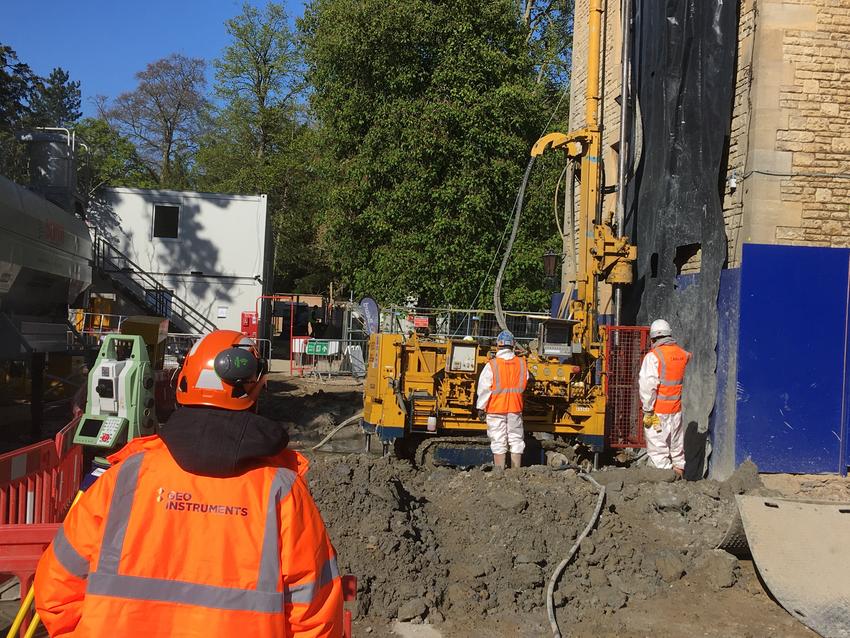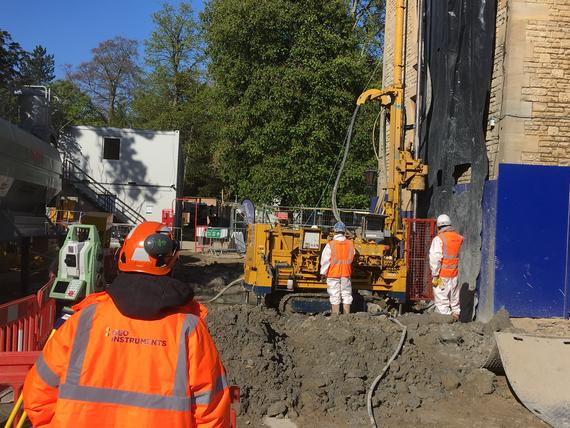GEO-Instruments have been working alongside their Keller colleagues on the £37m redevelopment of an historical building in Oxford.

The project
Keller have been undertaking piling and jet grouting works at Rhodes House over the last few months as part of remodelling work being carried out by Beard Construction.
The work includes converting the basement into a conference hall for 300 people and providing new accommodation and improved office spaces.
The Grade II listed building is the headquarters of the Rhodes Trust which has awarded scholarships to more than 8,000 overseas students to study at Oxford University since its creation in 1902.
The challenge
The age and historic importance of the building meant that there must be intensive monitoring throughout the piling and jet grouting works to examine the influence on the building.
Movement tolerances needed to be very small and any movement needed to be detected and reported near instantly.
The installation of automated sensors would be under strict time and access constraints before the ground works began. A comprehensive monitoring system would need to be installed all around the outside of the building whilst manoeuvring around concurrent works by Keller and Beard in the same space.
The solution
Engineers from GEO-Instruments were first on site to install a large hydrostatic levelling cells system all around the development as well as tiltmeters to monitor movement for construction works.
This combination of 24h settlement and tilt monitoring around the structure gives a complete picture of the impact and efficacy of the piling and grouting measures.
GEO-Instruments remained to work closely with the other Keller teams during jet grouting , using manual monitoring techniques to supplement the automated systems.
GEO-Instruments will continue to monitor the rest of the construction works remotely until their conclusion.

